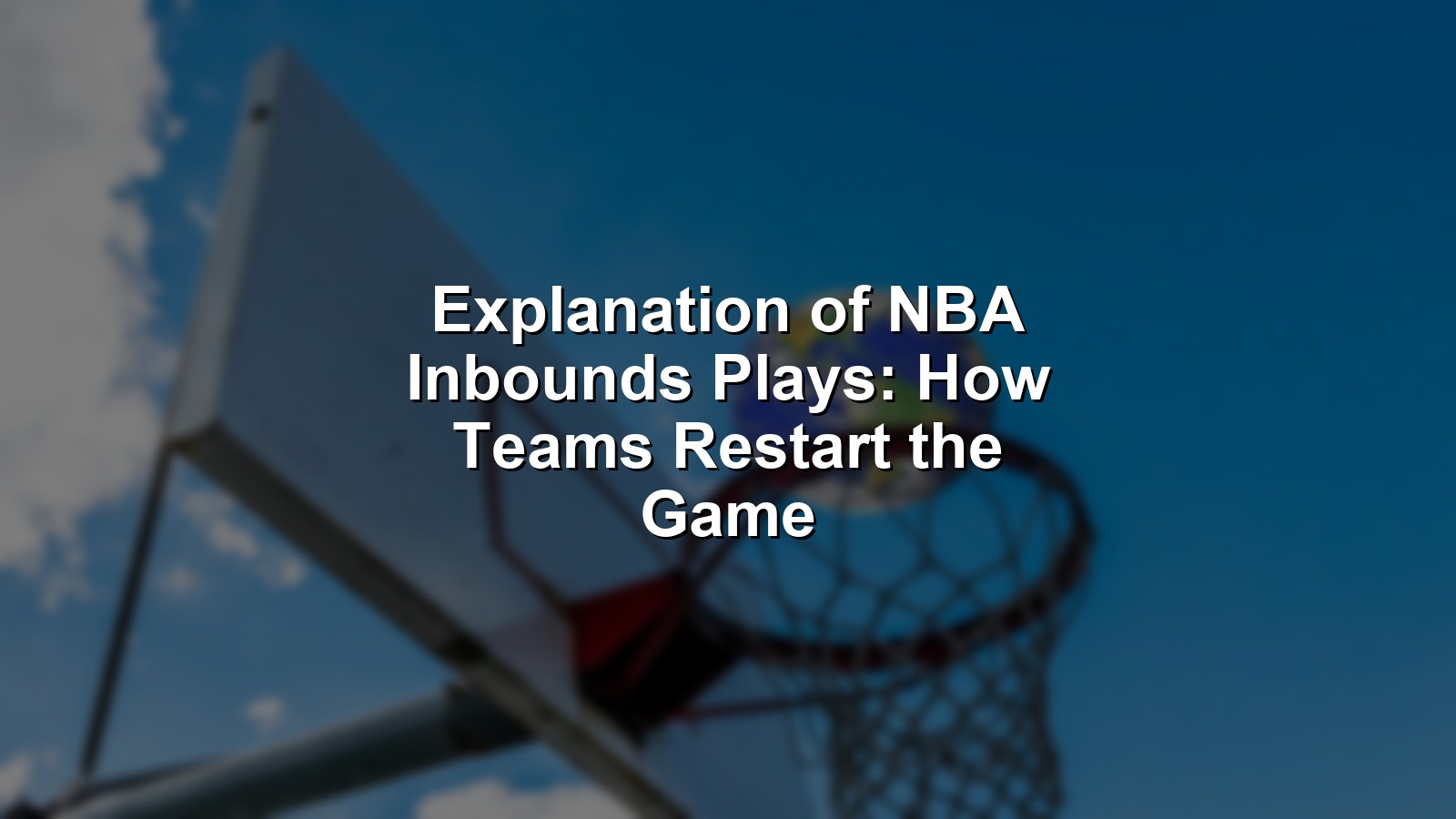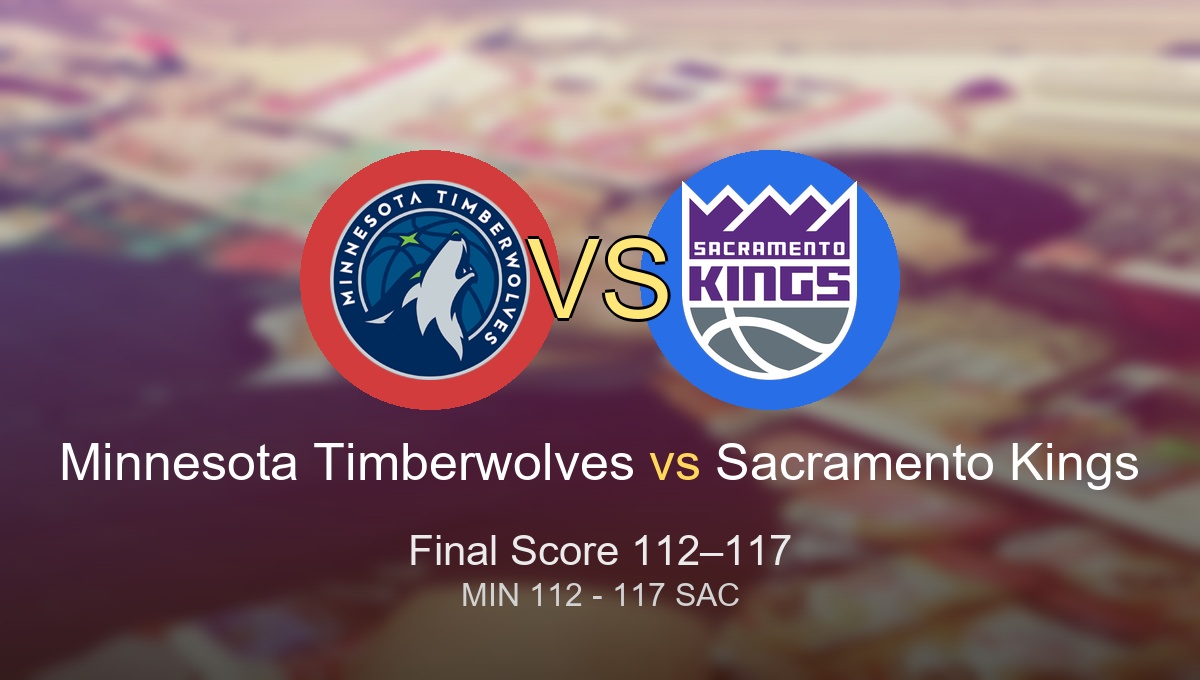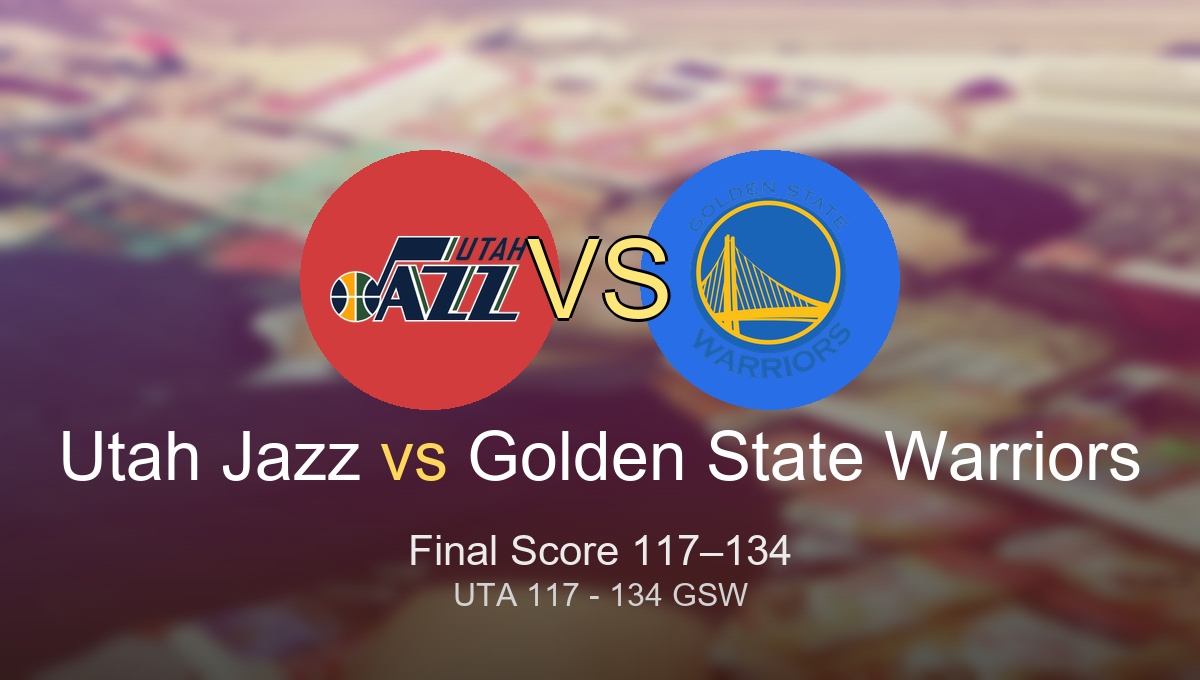
Ask anyone who’s watched the NBA playoffs: sometimes, everything comes down to a single inbounds play. The ball on the sideline, seconds on the clock, and millions holding their breath. The restart—the inbounds—can flip the outcome in a blink. The explanation of NBA inbounds plays isn’t just about diagrams; it’s about history, legends, and the clever ways teams steal a game or even a title.
These are the hidden chess moves beneath those buzzer-beaters we’ll never forget. Inbounds plays reveal a coach’s nerve, a player’s court IQ, and sometimes, the guts to take a shot you’ll remember for decades. Today, we break down the 10 most iconic and revealing NBA inbounds plays—each a study in design, execution, and impact.
Context: Why This Matters
Arguing about NBA greatness always comes down to rings, stats, and those “did you see that?” moments. But there’s a secret battleground—on the margins, at the edge of pressure—where inbounds plays decide legacies. Some say you can’t measure coaching genius or trust with a box score. But when you see a perfectly timed lob or a screen freeing up a shooter for the win, you know you’re seeing the difference between OK and legendary.
Rings matter, but so do the ways teams get them. What play does a coach trust with the season on the line? Which player gets the nod to inbound the ball with 0.4 on the clock? The best inbounds moments shaped not just games, but entire eras.
Methodology
To rank the 10 most iconic and instructive NBA inbounds plays, we weighed each moment on three axes:
- Impact on Championships & History (40%): Did the play decide a title, a series, or rewrite a team’s story?
- Strategic Brilliance & Originality (30%): Did the play break new ground or become a blueprint?
- Player Execution & Legacy (30%): Was it a signature moment for a star, or a career-defining role for an unsung hero?
Sources include official NBA stats, Basketball-Reference, and broad NBA media consensus through years of coverage.
For more on NBA rules and history, see NBA Official Rules and the Naismith Hall of Fame.
The Plays That Changed Everything: 10 Great NBA Inbounds Moments
1. “The Shot”—Michael Jordan vs. Cavaliers (1989)
May 7, 1989. Fifth and final game of Bulls-Cavs. The ball out of bounds, three seconds left, Bulls trail by one. Brad Sellers inbounds to Michael Jordan, who dances left, rises over Craig Ehlo… and hits the jumper at the horn. The crowd is stunned; a dynasty’s foundation is poured.
Jordan’s shot off an inbounds isn’t just about the make. It’s about how the Bulls built an era around trusting their star with the ball, the floor spread perfectly—a lesson in both execution and faith. Decades later, coaches everywhere still use that play as shorthand for “give it to your best guy, run him to his spot, and get out of the way.”
Craig Ehlo once said, “I knew it was coming, but there’s no defense for greatness.” The moment lives on in highlight reels, and in every gym where a kid with a ball counts down the clock.
Key facts:
– 1989 Eastern First Round, Game 5
– Michael Jordan’s 44 points, series winner
– Launched the “MJ as clutch” legend
Authoritative sources: nba.com, basketball-reference.com
🧵 On X
https://x.com/search?q=Michael%20Jordan%20The%20Shot%20inbounds
2. “0.4 Seconds”—Derek Fisher vs. Spurs (2004)
Most plays need time to develop, but in the Western Semis in 2004, the Lakers only had 0.4 seconds. Gary Payton’s pinpoint inbounds to Derek Fisher—and Fisher’s miracle catch-and-fling—ended the Spurs’ hopes, silenced the crowd, and became a rulebook example: you need at least 0.3 seconds to catch and shoot.
This wasn’t just luck. The Lakers’ preparation and Fisher’s poise flipped an entire postseason. The moment became a clarion call for quick hitters: how to design pressure inbounds with no margin for error.
“It happened so fast, I just trusted my muscle memory,” Fisher later said. That’s the magic of inbounds simplicity—sometimes, just a fraction of a second decides everything.
Key facts:
– 2004 Western Semifinal, Game 5
– Only 0.4 seconds on the clock
– Forced the NBA to clarify the “catch and shoot” rule
Authoritative sources: nba.com, espn.com
🧵 On X
https://x.com/search?q=Derek%20Fisher%200.4%20Lakers
3. “The Pass”—Larry Bird Steals vs. Pistons (1987)
June 1987, Eastern Finals, Game 5. Pistons set to inbound, up one, 5 seconds to go. Isiah Thomas tries a quick pass—but Larry Bird, reading everything, steals it in midair, then finds Dennis Johnson underneath for a quick layup. The crowd erupts. Boston steals the win, and Bird cements his genius.
Here, it wasn’t an offensive inbounds, but a defensive one—the ultimate read-and-react moment. Bird’s anticipation is now legendary. This play is why coaches drill every detail: one slip, one lazy pass, and the series is gone.
A Detroit radio caller summed it up: “That’s why you fear Larry.” Bird’s steal is still the gold standard for reading inbounds mayhem.
Key facts:
– 1987 Eastern Finals, Game 5
– Bird’s game-winning steal and assist
– Kept Celtics’ title hopes alive
Authoritative sources: nba.com, basketball-reference.com
🧵 On X
https://x.com/search?q=Larry%20Bird%20inbounds%20steal
4. “The Hammer”—Spurs’ Signature inbounds play (2013 Finals)
Game 6, 2013 NBA Finals. Spurs down three late, ball sideline out. They run the famous “Hammer” action—penetration, a back pick, a shooter (Danny Green) released to the corner. This variant nearly ends the Heat’s season, but LeBron James recovers just in time.
The “Hammer” isn’t just a play—it’s a system. It spread through the league, inspiring coaches from Popovich’s bench to high school teams everywhere. Its balance of misdirection and spacing is the playcalling equivalent of a timeless riff.
Heat assistant David Fizdale: “We practiced that coverage all year. Still, it almost worked.” That’s true respect.
Key facts:
– 2013 NBA Finals, Game 6
– Spurs’ go-to sideline out-of-bounds play
– Spawned dozens of copycats leaguewide
Authoritative sources: nba.com, espn.com
🧵 On X
https://x.com/search?q=Spurs%20Hammer%20play%20NBA
5. “The Lob”—Vince Carter’s Alley-oop Dagger (2000 Olympics & Raptors)
September 2000, Sydney Olympics: Vince Carter dunks over 7’2” Frédéric Weis, but it started with a slick inbounds. That same year, for Toronto, Carter’s playoff heroics included a perfectly timed alley-oop off a baseline out play. Whether FIBA or NBA, teams began designing lobs to shock defenses and thrill crowds.
Vince wasn’t just a dunker. These moments proved he could read defenses and be the target of high-difficulty passes. The “lob” off a baseline out became an NBA staple—and Carter was the trendsetter.
A Toronto broadcaster: “If you leave Vince a sliver of daylight, expect liftoff.”
Key facts:
– 2000 Olympic “Dunk of Death” started with inbounds
– Raptors’ baseline lob staple
– Made alley-oop inbounds mainstream
Authoritative sources: nba.com, basketball-reference.com
🧵 On X
https://x.com/search?q=Vince%20Carter%20inbounds%20lob
6. “The Play That Wasn’t”—Chris Webber’s Timeout (1993 NCAA, Influence on NBA)
Everyone remembers Chris Webber’s infamous timeout in the 1993 NCAA title game. But inbounds pressure—and having no timeouts left—remains a coaching obsession today. Webber’s blunder, referenced endlessly by NBA coaches, changed how teams manage timeouts and sideline playbooks.
Though not an NBA play, its echoes ripple in pro games. NBA teams now over-communicate and practice scenarios to avoid the unthinkable. Inbounds are as much about mental mistakes as heroic makes.
Steve Kerr: “Every huddle, someone mentions, ‘We can’t Webber this.’” That’s how legends and lessons get passed down.
Key facts:
– 1993 NCAA Finals, infamous “timeout” after inbounds
– Sparked changes in timeout management, NBA included
– Haunts late-game huddles everywhere
Authoritative sources: nba.com, espn.com
🧵 On X
https://x.com/search?q=Chris%20Webber%20timeout%20inbounds
7. “The Valpo Miracle”—Bryce Drew’s Full-Court Play (1998 NCAA, Adopted by NBA)
March 1998, NCAA first round. Valparaiso with 2.5 seconds left, inbounding full court. A long pass tipped, one dribble, Bryce Drew splashes a three. The crowd erupts. The design was so smooth, NBA coaches began installing full-court “home run” inbounds for must-score situations soon after.
The NBA has borrowed this play ever since: a deep inbound, a tip, a catch, an immediate shot. What once seemed like a prayer became a regular feature in NBA do-or-die endings.
A coach on the current Raptors bench: “Every team’s got a ‘Valpo’ in the playbook now.”
Key facts:
– 1998 NCAA first round, Valparaiso upset
– Inspired NBA “home run” sideline plays
– Epitome of well-timed execution
Authoritative sources: basketball-reference.com, espn.com
🧵 On X
https://x.com/search?q=Valpo%20Miracle%20inbounds%20NBA
8. “Rip City’s Escape”—Dame Lillard’s Bye-Bye Buzzer (2014)
April 2014. Blazers vs. Rockets, Game 6. With 0.9 seconds left, Nicolas Batum delivers a sideline out-of-bounds pass to Damian Lillard, curling free for a three. It’s pure confidence: the ball passed, released, and Portland erupts as Lillard sends Houston home.
Dame’s shot shows how the right inbound—timing, spacing, and a trust in your star—can change a franchise’s fate. Lillard’s “bye-bye” wave became an NBA meme, and coaches everywhere searched for ways to free their shooters in crunch time.
Damian Lillard: “We ran this a thousand times in practice. This was the one that mattered.”
Key facts:
– 2014 West First Round, Game 6; series-winner
– 0.9 seconds on the clock
– Lillard’s first playoff buzzer-beater
Authoritative sources: nba.com, basketball-reference.com
🧵 On X
https://x.com/search?q=Damian%20Lillard%20inbounds%20shot
9. “The Switch”—Golden State’s SLOB Magic (2015–2019 Dynasty)
Golden State made sideline out-of-bounds (SLOB) plays an artform from 2015–19. With shooters everywhere and Draymond Green quarterbacking, the Warriors ran split-cuts, decoys, and back screens that regularly resulted in layups—or wide open Steph Curry threes.
What set them apart was unpredictability. Teams would key on Curry, then Livingston or Iguodala would slip for an easy two. Steve Kerr’s playbook reset what was possible from a sideline.
A Warriors fan, after a big win: “They make inbounds look unfair.”
Key facts:
– Four Finals in five years (2015–2019)
– Dozens of unique SLOB sets
– Draymond Green as an elite playcaller
Authoritative sources: nba.com, basketball-reference.com
🧵 On X
https://x.com/search?q=Warriors%20inbounds%20playbook
10. “Big Oops”—Anthony Davis and the Lakers (2020 Bubble)
Western Conference Finals, Game 2. Nuggets lead by one, 2.1 seconds left. Rondo inbounds to Anthony Davis, who flashes beyond the arc and hits the game-winner. He yells, “Kobe!” as the Lakers celebrate.
This wasn’t just about the shot, but the design—the screens, the timing, the star getting open when eyes were on LeBron. NBA teams watched and added new variations to get their bigs shooting threes or rolling to the rim off inbounds.
Anthony Davis: “The trust in my teammates—that’s everything in this moment.”
Key facts:
– 2020 Western Conference Finals, Game 2
– Davis’ walk-off corner three
– Lakers’ sideline set lifted from earlier era, modernized
Authoritative sources: nba.com, espn.com
🧵 On X
https://x.com/search?q=Anthony%20Davis%20game%20winner%20inbounds
What Comes Next
These 10 moments are more than highlight fodder. They explain why NBA games are rarely over until the horn, and how inbounds plays can swing franchises and ignite arguments decades later. Each play reveals something different: raw guts, strategic genius, or the kind of preparation only the best teams trust.
As shooting evolves and analytics deepen, expect even more creative inbounds action. With coaches borrowing from all over the world and every level, the next iconic restart could be drawn up anywhere—from a Chicago sideline to a Slovenian summer league.
Current stars like Luka Dončić and Jayson Tatum are already making inbounds a nightly chess match. One day, their moments could crack a list like this. For now, whenever you see a huddle and a coach drawing on the clipboard, remember: the next twist in NBA history could be one good inbounds play away.



